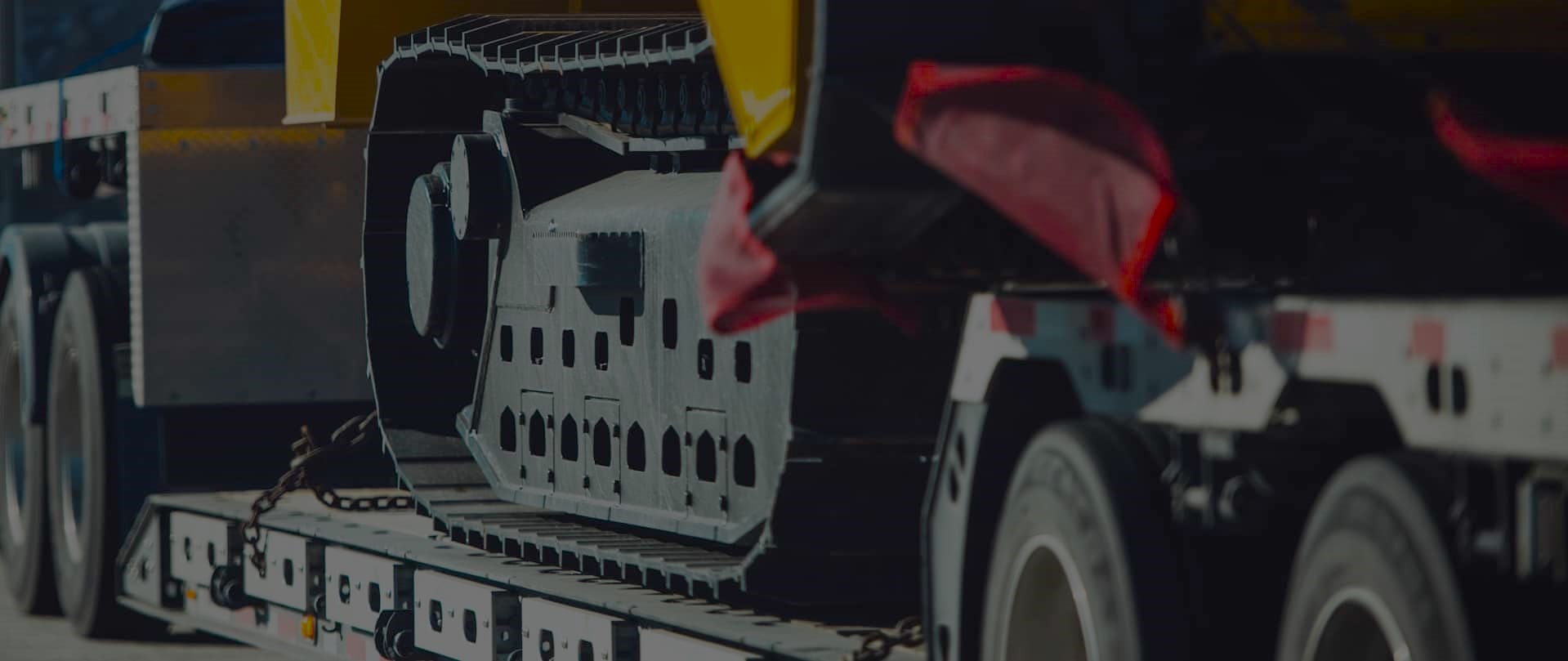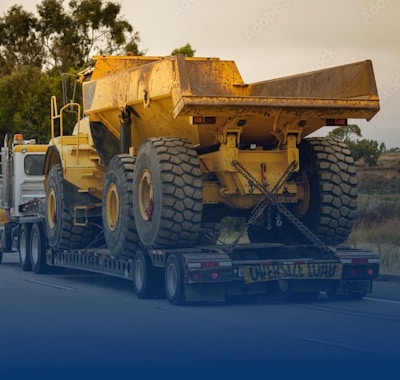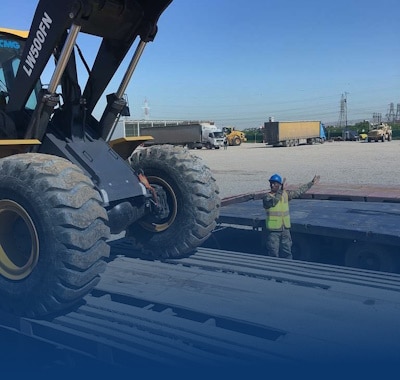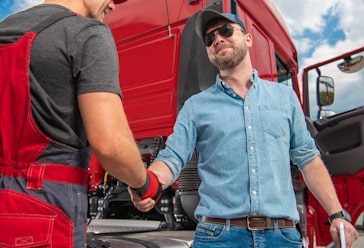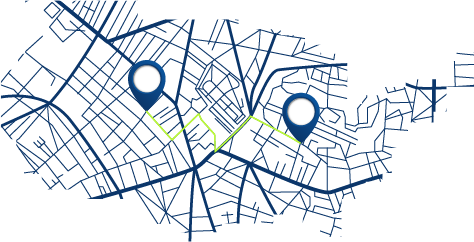How West Coast Bridge Projects Delay Oversize Load Deliveries
Freedom Heavy Haul can offer expedited Pickup and Delivery for any size shipment anywhere in the USA. Contact us today for No Hassle, No Pressure Pricing.
Construction along major spans reshapes transportation routes and can add hours or days to a shipment. When work reduces lanes or lowers clearances, your team faces tough choices about route, trailer, and timing.
Legal height limits differ by states, and measuring from ground to the highest point is critical. A few inches matter: trailer tires, deck type, and cargo all count toward total height.
Permits are required in each jurisdiction, so one work zone can force new approvals and rerouting. Route engineering helps planners avoid low structures and utility lines.
Specialized trailers—step-deck, double-drop/lowboy, RGN, and perimeter—cut overall profile and keep shipments within legal limits. Securement must use reinforced chains or straps and meet FMCSA/DOT rules.
This guide gives practical steps for route planning, permit strategy, equipment choice, and on-road execution so you can protect cargo, infrastructure, and schedule during active construction.
Why West Coast bridge construction impacts oversize transportation right now
Active reconstruction along major spans is forcing carriers to rethink routes and timing right now. In California, Oregon, and Washington the normal legal height cap is 14 feet, but active construction can add temporary restrictions that lower clearances or impose weight limits.
Rehabilitation and replacement work often compress lanes, shift traffic, and create work zones with narrower shoulders. That makes moving tall or heavy vehicles slower and more complex.
Coordinated work across multiple spans can multiply effects. Stacked detours, reduced speed zones, and off‑peak travel windows add hours to transit and complicate logistics planning.
- Temporary structural limits and nearby utility moves can reduce safe clearances for tall loads.
- Tighter turning radii and smaller shoulders may rule out long trailers unless an alternate route is engineered.
- Permits frequently limit travel times, require escorts, and ban weekend or holiday moves.
“Small route adjustments and updated permits save time when conditions change fast.”
Pro tip: Reassess the route at each construction phase. Updated permits, alternate routes, and refined schedules cut risk and preserve delivery windows.
How West Coast bridge projects delay oversize load deliveries
Construction staging around key crossings can quickly turn a simple haul into a multi-jurisdiction logistics puzzle. Lane shifts, temporary signs, and new posted limits force planners to recheck every mile and permit.
Lane closures, detours, and low-clearance work zones
Lane closures narrow operating space and can bar wide or long rigs, forcing engineered detours that add mileage and time.
Detours often route traffic under older overpasses or through city streets. Those alternate paths create unexpected low-clearance pinch points that conflict with load height.
Temporary height, weight, and time-of-day restrictions
Work zones may set height caps below normal legal limits or reduce weight on temporary spans. What was legal yesterday may not pass today.
Time windows commonly limit movement to off-peak hours. That pushes schedules, strains driver availability, and can complicate hours-of-service planning.
Permit processing slowdowns and multi-agency approvals
Over-dimensional transport needs permits for each jurisdiction. Multi-agency reviews and required traffic control sign-offs often lengthen approval time.
Police escorts or pilot cars may be mandated at complex interchanges, increasing lead time and cost. Route re-approvals follow any change in staging or posted limits.
- Pre-trip surveys and pole cars validate real-world clearances as work zones evolve.
- Buffer time in schedules protects downstream crane windows and site crews from cascading disruptions.
“Exact compliance with permits, signage, and securement matters more during active work—enforcement tightens and penalties rise.”
Plan smarter routes: a how-to for navigating active bridge work zones
Begin route planning with a measured check of the full rig. Confirm total height on level ground, from the roadway to the highest point, with trailer deck, tires, and secured cargo in place.
Measure height before you map
Don’t trust specs alone. Measure at multiple high points and recheck after securement to capture suspension squat and settling. Even a 2–3 inch variance can block a permit.
Use route engineering to avoid chokepoints
Engage engineers to chart turns, overhead utilities, and low structures across every state and county crossed. Include turn-by-turn constraints and diagrams for crews and pilot cars.
Build region-specific alternates
Pre-permit both primary and secondary routes so you can switch without losing time. Factor in east west legal height differences when stitching segments to long national moves.
Consider water or rail for the longest legs
For dense urban corridors, evaluate barge or rail for main transit, then transload to truck for final miles. This can be the best solution when road options are constrained.
“Measure the loaded truck before departure; real-world inches beat paper numbers every time.”
| Action | Why it matters | Who to involve | Quick tip |
|---|---|---|---|
| Full rig height check | Ensures permits match reality | Driver, rigger | Measure on level ground |
| Route engineering | Avoids low spans and utilities | Route engineer, DOT | Include diagrams |
| Pre-permitted alternates | Speeds switching during work windows | Permit team, carrier | Permit cross-state options |
| Water/rail option | Reduces urban truck miles | Marine/rail operator | Plan transload points |
Permits, approvals, and regulations: steps to stay legal and on schedule
Permits and local approvals shape every mile; missing one can stop your convoy at a work zone. Over-dimensional freight needs a separate permit for each state, county, and township along the route. Get approvals early and confirm township or municipal paperwork—missing even one halts movement.
Secure OSOW permits for every state, county, and municipality on route
List the paperwork. State oversize permits, county/route permits, township or city transit permits, and special bridge/structure approvals. Some states add seasonal or extreme-weight endorsements for heavy axle spacings.
Account for travel bans, holiday curfews, and escort requirements
Common restrictions include daylight-only windows, rush-hour bans, weekend or holiday curfews, and weather limits. Escorted moves call for pilot cars or police escorts depending on dimension and route complexity.
- Work with a responsive services team to submit full applications and reduce rejections.
- Maintain a permit matrix and renewal calendar across states to protect schedules.
- Follow FMCSA/DOT securement standards in every permit plan to avoid stops and fines.
“Complete permits, current postings, and proper escort planning keep convoys moving and inspections brief.”
| Requirement | When needed | Who handles it |
|---|---|---|
| State OSOW permit | Crossing state lines with special dimensions | Permit team, carrier |
| County/township permit | Local roads or detours through municipalities | Local DOT, route planner |
| Police escort | Critical interchanges or very wide/heavy moves | Local law enforcement |
Select the right trailers and equipment to reduce height and risk
Choosing low-profile equipment early saves time and reduces the risk of route rework. Match trailer selection to height, weight, and permit limits before you file. The right choice trims inches and simplifies approvals.
Trailer types and typical deck heights
| Type | Deck height | Best use |
|---|---|---|
| Step-deck | 3 ft 6 in | Moderate overheight goods |
| Double-drop / lowboy | 24 in | Tall machinery, high centers of gravity |
| RGN | 24 in | Heavy gear that needs low profile |
| Perimeter | 18 in | Extreme height or wide data-center cargo |
Divisible vs. non-divisible considerations
Split when you must. Stacked or separable items are generally divisible and cannot get single-piece permits. One-piece machinery may qualify for an oversized permit if it meets weight and dimension rules.
Securement and safety best practices
Use engineered plans with reinforced chains, rated straps, and bracing that meet or exceed FMCSA/DOT specs. Balance axle counts to match expected weight distribution on temporary spans.
- Prefer multi-axle or extendable configurations for long or heavy moves.
- Manage center-of-gravity, control overhang, and tune suspension to stabilize through uneven work zones.
- Reduce profile by removing antennas, folding booms, or partial disassembly when safe.
“Right trailer choice prevents re-permitting and keeps your schedule on track.”
Execute safely on the road with escorts, communication, and compliance
Clear, real-time communication between drivers and escorts keeps convoys safe through active work zones. Plan an upfront safety briefing and document roles so every person on the route knows their responsibilities.
Coordinating escort vehicles, signage, and FMCSA/DOT securement standards
Escort vehicles and pilot cars may be required by state permits. Define who leads pathfinding, who monitors clearances, and who handles traffic control liaison.
Use standardized signage, amber lighting, and flagging per local regulations. Notify construction managers and law enforcement in advance when staging changes could affect passage.
- Run FMCSA/DOT securement checks at each fuel or stop. Re-torque chains and inspect straps as temperatures shift.
- Maintain rolling updates from the state and relay changes to drivers using CB, cellular, and telematics.
- Hold a post-trip review to capture lessons and tighten your procedures for the next shipping window.
“Document inspections and communicate continuously to keep the transport moving and compliant.”
| Item | Purpose | Who | Quick action |
|---|---|---|---|
| Pre-trip safety brief | Align team on hazards and contingency plans | Driver, escort, dispatch | Checklist sign-off |
| Escort assignment | Guide route and manage traffic | Pilot car operator, carrier | Confirm radios and lights |
| Securement checks | Meet FMCSA/DOT regulations, prevent shifts | Driver, rigger | Inspect chains/straps at each stop |
| State updates | React to closures or staging changes | Dispatch, permit services | Send real-time alerts |
West vs. East: understanding legal height limits that shape your route
A clear grasp of statutory vertical limits makes route planning reliable. Different states set different maximum clearances, and that affects trailer choice, permits, and timing. Plan for the strictest limit you’ll meet on the trip.
Typical patterns and examples
Higher caps farther west often mean 14 feet in many states. California, Oregon, and Washington commonly allow 14 ft. Colorado and Nebraska go higher in places, with 14 ft 6 in on some routes.
In contrast, many eastern states standardize at 13 ft 6 in. That uniformity appears across much of the east coast, though exceptions exist—Maine posts 14 ft on local roads but uses 13 ft 6 in on the Maine Turnpike.
Why the limits differ
Older infrastructure and denser urban grids in the East create lower clearances and stricter regulations. The West often has newer spans and longer rural corridors, so limits trend higher. These differences reflect infrastructure age, population density, and local safety rules.
Practical routing and compliance tips
- Plan for transitions: Crossing the Mississippi can change legal height immediately; validate limits before you cross.
- Trailer choice matters: Use lower-deck options when eastern corridors are on the route.
- Check current postings: Temporary maintenance or construction can reduce posted vertical space below statutory limits.
“Know the strictest posted clearance on your route and choose equipment to match.”
| Region | Common statutory limit | Examples | Planning note |
|---|---|---|---|
| Western states | Often 14 ft (some 14 ft 6 in) | CA, OR, WA; CO/NE up to 14 ft 6 in | Leaner trailer decks ease permits |
| Eastern states | Typically 13 ft 6 in | Most east coast states; Maine exceptions | Expect escorts and strict urban routing |
| Work zone impacts | Temporary reductions possible | Posted local limits override statutes | Confirm postings daily before departure |
Timelines and costs: what delays could mean for your delivery window
A single site restriction or permit denial may push a shipment out by several days and raise costs. Typical transit for special hauls runs from a few days to a week. That range depends on route restrictions, permit approvals, and required escorts.
Permit lead times, construction-driven rules, and escort coordination all extend schedules beyond normal long-haul expectations. Missed crane windows, idle crews, and rescheduling fees compound project costs fast.
“One denial can cascade into a weeklong setback; plan buffers and ready alternates.”
Heavier weight and special configurations multiply review time across jurisdictions. Multi-state approvals take longer when specialty trailers or police assistance are required.
| Driver | Common impact | Cost drivers | Mitigation |
|---|---|---|---|
| Permit team | Longer lead time | Multi-jurisdiction fees | Pre-file alternates |
| Carrier | Escort needs | Additional pilot cars, police | Book escorts early |
| Logistics manager | Route changes | Added miles, evening moves | Contingency budget & time |
| Project exec | Site readiness | Idle crews, crane reschedule | Align ETAs and staffing |
Hold a contingency reserve for both time and money. Consider phased shipping for multi-piece work to reduce exposure if one leg encounters restrictions. Sync your logistics team, carriers, and on-site managers so shipping windows match site readiness.
Also verify insurance and liability approvals before moving near temporary structures. Transparent, frequent ETA updates let receivers adjust staffing and equipment and cut waiting costs.
Bring it home: practical steps and expert help to keep your load moving
End with practical actions your team can take today to keep special transport moving safely.
Quick checklist: measure total height, pick the right trailer and equipment, pre-engineer routes, pre-file permits, book escorts, and confirm site readiness.
Partner with an expert team that offers integrated services—route engineering, permitting, securement planning, and escort coordination—to streamline complex shipping. Seek solutions that include alternate modes for long legs when a bridge corridor is constrained.
Standardize documentation, inspection routines, and pre-trip calls with DOT and construction managers. Train operations and procurement staff, use mapping and telematics for visibility, and run after-action reviews to improve SOPs.
Ready to reduce risk? Contact an expert provider to audit your plan and tailor services that keep your vehicles and supply chain on schedule.
